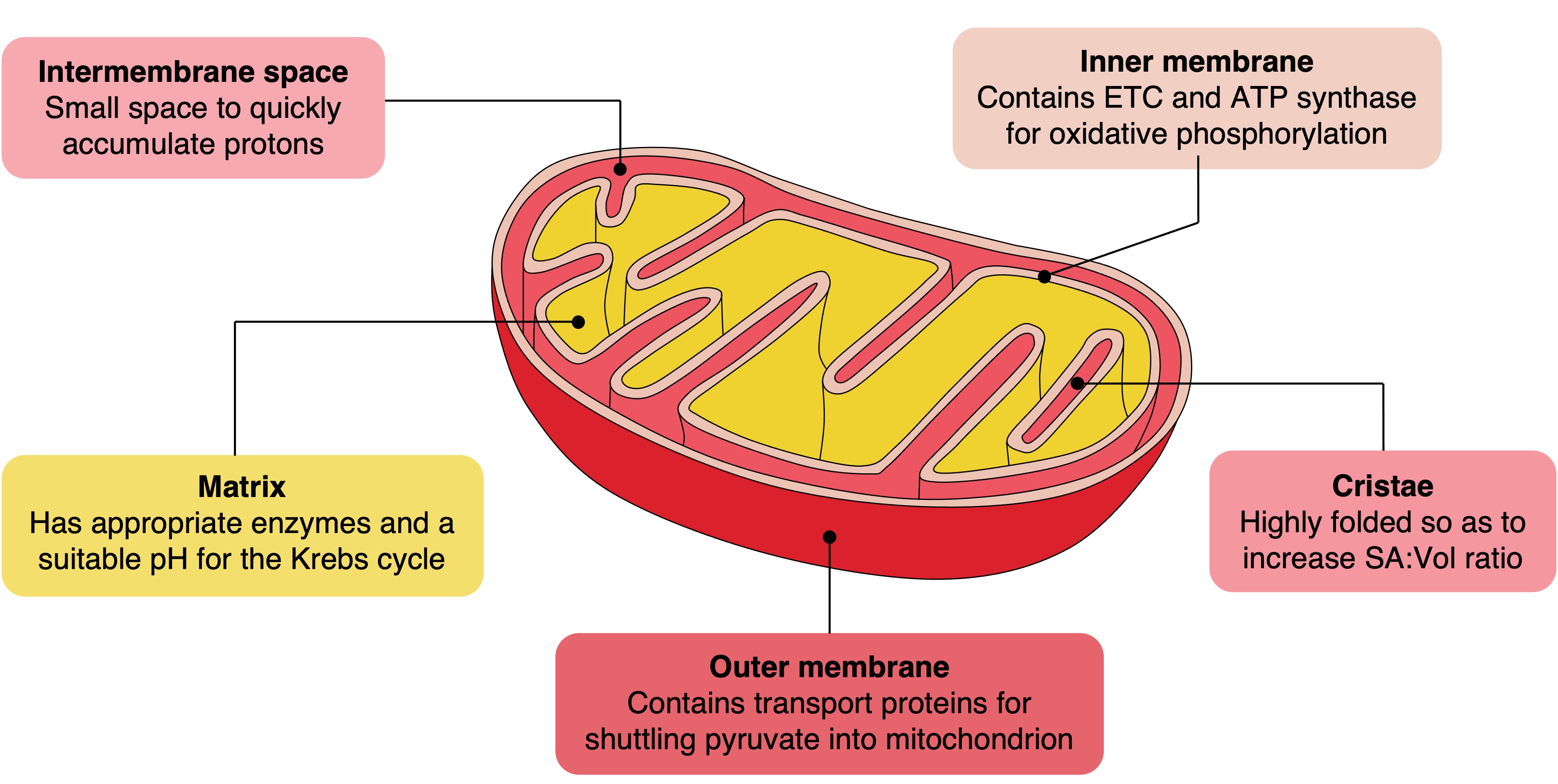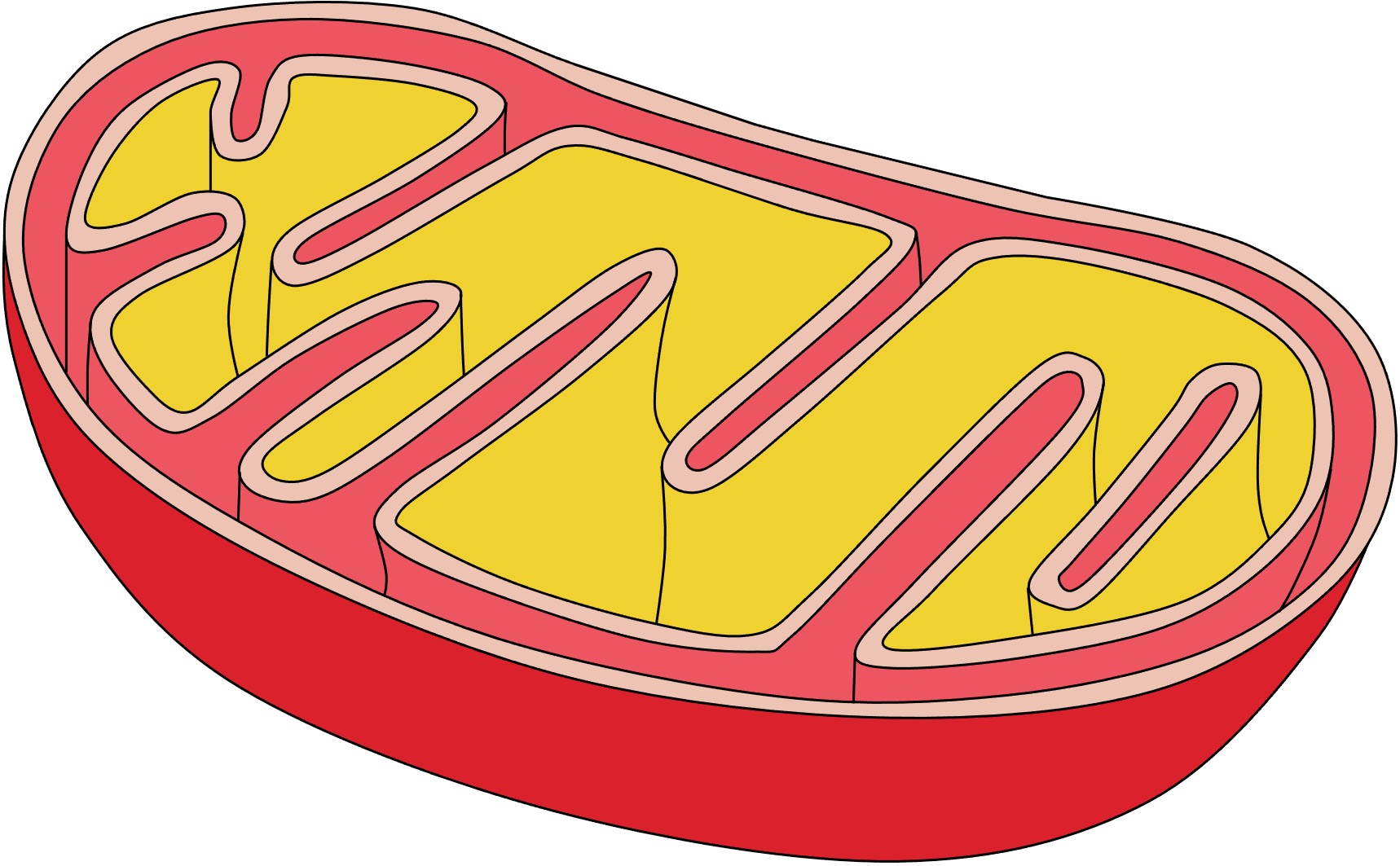

Mitochondria
Mitochondria are the ‘powerplants’ of the cell – synthesising large amounts of ATP via aerobic respiration
-
All eukaryotic cells possess mitochondria – certain prokaryotes use the cell membrane to respire aerobically
Mitochondria are thought to have once been independent prokaryotes that were internalised via endosymbiosis
-
They have a double membrane structure (due to vesicular coating as part of the endocytotic process)
-
They have their own DNA (circular and naked) and ribosomes (70S)
-
Their metabolic processes are susceptible to certain antibiotics
The structure of the mitochondrion is adapted to the function it performs:
-
Outer membrane – the outer membrane contains transport proteins that enable the shuttling of key materials from the cytosol
-
Inner membrane – contains the electron transport chain and ATP synthase (used for oxidative phosphorylation)
-
Cristae – the inner membrane is arranged into folds (cristae) that increase the SA:Vol ratio (more available surface area)
-
Intermembrane space – small space between membranes maximises hydrogen gradient upon proton accumulation
-
Matrix – central cavity that contains appropriate enzymes and a suitable pH for the Krebs cycle to occur
Structure of a Mitochondrion







